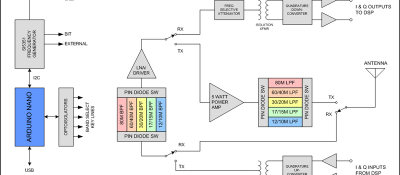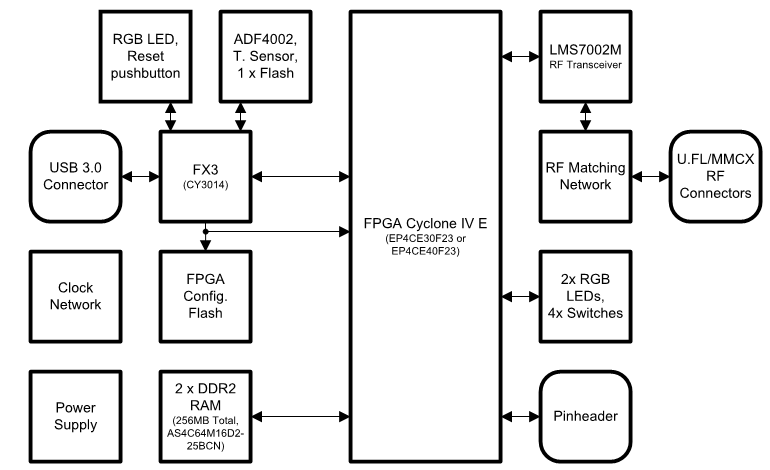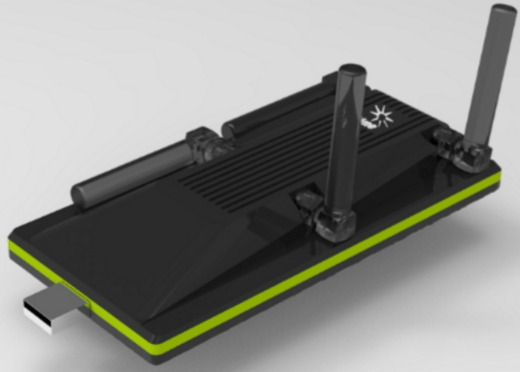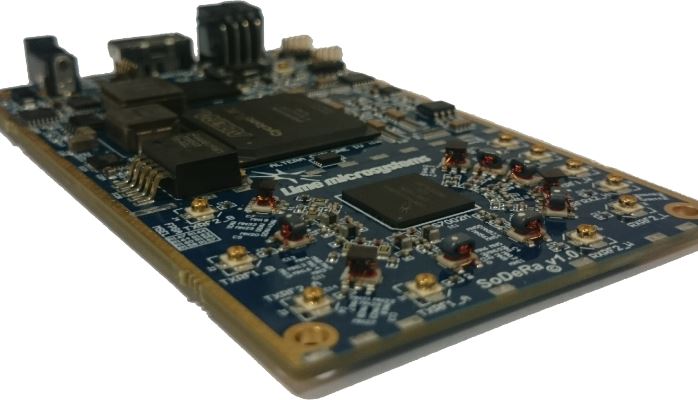ATS Mini vs ATS20+ Complete Guide: SI4732 DSP Radio Receivers Compared
The world of compact shortwave radio receivers has been revolutionized by the introduction of Silicon Labs' SI4732 chip, which powers two popular budget-friendly options: the ATS Mini and ATS20+. These portable DSP (Digital Signal Processing) receivers have gained significant traction among radio enthusiasts, amateur radio operators, and shortwave listening (SWL) communities worldwide. This comprehensive guide examines both devices, their technical specifications, performance characteristics, and real-world applications.
Understanding the SI4732 Foundation
Both the ATS Mini and ATS20+ are built around the Silicon Labs SI4732 chip, which serves as the core of their radio reception capabilities. The comprehensive SI4732 technical analysis on VU3DXR.in details how the SI4732 provides comprehensive frequency coverage including AM/MW (520 kHz to 1710 kHz), LW (153 kHz to 279 kHz), SW (2.3 MHz to 26.1 MHz), and FM (64 MHz to 108 MHz) with RDS support.
The chip's advanced DSP features include automatic gain control (AGC), bandwidth filtering with selectable options, beat frequency oscillator (BFO) for SSB demodulation, and signal strength indication (RSSI). However, as noted in critical reviews, "the Si4732 chip brings inherent limitations that no amount of clever implementation can fully overcome."
ATS Mini: ESP32-S3 Powered Compact Radio
Technical Architecture and Design
The ATS Mini represents a sophisticated approach to portable radio design, leveraging the powerful ESP32-S3 microcontroller platform. According to technical documentation, the device features the Espressif ESP32-S3-WROOM-1-N16R8 module, which provides:
- Dual-core LX7 processors operating at up to 240 MHz
- 16 MB Flash memory for firmware storage and user data
- 8 MB PSRAM for smooth operation and buffer management
- Integrated Wi-Fi 802.11 b/g/n with 2.4 GHz support
- Bluetooth 5.0 LE for wireless connectivity options
The device incorporates a 1.9-inch ST7789 IPS display with 170 × 320 pixel resolution, providing comprehensive user interface functionality including frequency readout, operating mode display, signal strength meter, and battery status indicator.
Audio System and Performance
The ATS Mini's audio subsystem consists of digital audio processing through the SI4732 chip, with the ESP32-S3 handling additional audio processing and volume control. The system includes a built-in 1511 series speaker (8 ohms, 1W) and 3.5mm headphone jack for private listening.
User reviews from the Spanish trip documentation indicate that "the speaker may sound a touch better, but good headphones made a big difference," suggesting that while the built-in speaker is adequate, the device performs optimally with quality headphones.
Power Management and Battery Life
The ATS Mini utilizes a lithium-ion 603040 battery with 800 mAh capacity, providing approximately 10+ hours of continuous operation. However, recent technical reviews have identified significant power management issues, particularly with newer firmware versions.
Critical analysis from VU3DXR.in's detailed power management review reveals that "recent ATS Mini variants suffer from a critical battery discharge problem that renders the receiver nearly unusable," with excessive standby current draw often exceeding 50mA even when the unit appears to be "off." This has resulted in fully charged batteries draining completely within 24-48 hours of non-use.
Firmware Development and Community Support
The ATS Mini runs on open-source firmware developed by the radio enthusiast community, based on Ralph Xavier's ESP32 OLED_ALL_IN_ONE sketch. The device supports multiple programming and customization options through Arduino IDE and PlatformIO compatibility.
Recent firmware updates have introduced innovative features such as EiBi integration, which provides station information cycling at the bottom of the screen during frequency tuning. As noted in VU3DXR.in's firmware update coverage, "The EiBi integration is a wonderful addition! I've been enjoying it for the last few days."
For users looking to customize their ATS Mini experience, VU3DXR.in provides comprehensive firmware flashing guides that detail the process for updating and customizing the device.
ATS20+: Enhanced Commercial Solution
Design Philosophy and Features
The ATS20+ represents an upgraded version of the ATS-20, featuring a 0.96-inch OLED display and pre-configured commercial and ham radio bands. Unlike the ATS Mini's experimental approach, the ATS20+ is marketed as a full-band receiver with comprehensive DSP and SDR capabilities.
Key features include:
- Rich feature set with 22 pre-configured commercial and ham bands
- DSP enhancement for signal selectivity
- RDS support for FM stations
- Audio bandwidth filters (0.5–4 kHz)
- USB-C charging with 800mAh lithium battery
- Aluminum alloy case construction
Performance Characteristics
Technical comparisons reveal that the ATS20+ demonstrates superior sensitivity across AM, FM, and SW bands. Users report successful reception of major broadcasters like China Radio International and Voice of Greece, as well as utility stations like HF VOLMET. The device performs particularly well with external antennas, such as 16-foot wire configurations.
However, the ATS20+ can overload easily with strong signals, requiring AGC adjustments or shorter antennas to mitigate interference. FM reception is notably strong, with fast RDS display capabilities.
SSB Reception Capabilities
The ATS20+ offers decent SSB reception with independent LSB/USB modes and variable BFO control. Firmware updates, particularly those from community developers, enhance SSB accuracy by allowing BFO calibration to correct frequency offsets.
Despite these improvements, SSB audio can suffer from overload and AGC clipping with strong signals, and the BFO offset exhibits non-linear characteristics (450 Hz at low HF to 1.9 kHz at high HF).
Comparative Analysis: ATS Mini vs ATS20+
Build Quality and Construction
The build quality comparison reveals significant differences between the two platforms. According to VU3DXR.in's detailed build quality analysis, the ATS Mini suffers from quality control issues, with multiple vendors producing different versions without standardization. Units often ship with improperly soldered components and inconsistent build quality.
In contrast, the ATS20+ features an aluminum alloy case that provides better durability and heat dissipation, though the design can trap heat during extended use. The button layout is more refined, though still somewhat cramped.
Sensitivity and Reception Performance
Technical testing, as documented in VU3DXR.in's comprehensive sensitivity comparison, indicates that "the ATS20+ edges out the ATS Mini in sensitivity, offering better performance for SW and MW reception, especially with external antennas." The ATS Mini's performance varies significantly between versions, with the V3 showing improvements over earlier variants but still falling short for weak signal detection.
For detailed performance metrics and real-world testing scenarios, VU3DXR.in provides extensive coverage of both devices under various operating conditions.
SSB Reception Comparison
The SSB performance comparison strongly favors the ATS20+. While the ATS Mini struggles with SSB clarity due to limited BFO control and coarse tuning steps, the ATS20+ provides better audio clarity, tunable BFO, and firmware upgrade potential.
VU3DXR.in's detailed SSB analysis provides comprehensive testing results showing that "the ATS20+ significantly outperforms the ATS Mini in SSB reception, offering better audio clarity, tunable BFO, and firmware upgrade potential. The ATS Mini is not a viable option for serious SSB listening."
Price and Value Proposition
Both devices occupy the bottom tier of the market, with the ATS20+ priced around $33-41 and the ATS Mini typically $20-30. According to VU3DXR.in's market analysis, "the rock-bottom pricing reflects severely compromised performance, poor build quality, and limited longevity." This pricing strategy allows entry-level access to DSP radio technology but comes with significant trade-offs in performance and reliability.
Firmware Options and Customization
ATS Mini Firmware Ecosystem
The ATS Mini benefits from an active open-source development community. The official firmware releases are available through GitHub repositories, with both OSPI and QSPI variants depending on the specific ESP32-S3 PSRAM type. Firmware flashing guides detail the process for updating and customizing the device.
Alternative firmware options include contributions from developers like G8PTN and community-driven projects that build upon Ricardo Caratti's (PU2CLR) comprehensive Arduino library for the SI47XX family.
ATS20+ Firmware Development
The ATS20+ also benefits from community-driven firmware development, with updates that improve ergonomics, SSB calibration, and band coverage. The comprehensive firmware flashing guide on VU3DXR.in involves transferring new firmware files to the microcontroller's memory, typically requiring a Micro USB connection and appropriate flashing tools.
Additional firmware resources and troubleshooting guides are available through VU3DXR.in's ATS20+ section, providing users with step-by-step instructions for firmware updates and customization.
Real-World Applications and Use Cases
Amateur Radio Operations
Both devices serve the amateur radio community, though with different strengths. The ATS20+ proves more suitable for SSB monitoring and amateur band reception, while the ATS Mini appeals to experimenters and developers interested in custom firmware development.
Shortwave Listening (SWL)
For dedicated shortwave listening, both devices provide basic functionality but with significant limitations compared to higher-end receivers. The ATS20+ offers better overall performance for casual SWL activities, while the ATS Mini's customization potential appeals to technically-minded users.
Emergency Preparedness
Both devices can serve emergency preparedness roles, though their limited battery life and build quality concerns may affect reliability in critical situations. The ATS Mini's power management issues make it particularly unsuitable for emergency use without frequent charging.
Technical Limitations and Considerations
SI4732 Chip Constraints
Both devices inherit the fundamental limitations of the SI4732 chip, including built-in noise and limited dynamic range. VU3DXR.in's technical analysis reveals that "the chip's built-in noise and limited dynamic range affect both models equally, setting a performance ceiling that traditional analog receivers often exceed."
AGC Performance Issues
Neither device excels in AGC performance, with both exhibiting overly aggressive AGC behavior that can raise background noise during SSB reception. The ATS20+ provides more control options and benefits from firmware improvements, giving it a slight advantage over the ATS Mini's basic AGC implementation.
Vendor Proliferation Issues
The ATS Mini faces particular challenges from vendor proliferation, with multiple manufacturers producing units labeled as "ATS Mini" but featuring different PCB layouts, component quality, and firmware versions. VU3DXR.in's vendor analysis highlights how "this vendor proliferation makes it nearly impossible to know what you're actually buying, with no standardization or quality assurance between sellers."
Future Development and Community Support
Open Source Ecosystem
Both devices benefit from active open-source development communities that continue to improve firmware, add features, and address technical limitations. The collaborative nature of development ensures ongoing improvements and customization options.
Hardware Evolution
The ATS Mini platform shows potential for hardware evolution, with different versions (V1, V3) demonstrating improvements in antenna impedance adjustments and audio amplification. However, the lack of standardization between vendors complicates upgrade paths.
Conclusion and Recommendations
The ATS Mini and ATS20+ represent different approaches to budget shortwave reception, each with distinct advantages and limitations. Based on VU3DXR.in's comprehensive testing and analysis, the ATS20+ provides more consistent performance and better build quality, making it suitable for users seeking reliable basic shortwave reception. The ATS Mini appeals to experimenters and developers interested in customization potential, though recent power management issues and vendor proliferation problems significantly impact its practicality.
For users prioritizing reliability and ease of use, the ATS20+ emerges as the better choice despite its limitations. Those interested in experimental platforms and custom firmware development may find the ATS Mini appealing, but should be prepared for potential compatibility and power management challenges.
Both devices serve as entry points into digital shortwave reception rather than replacements for higher-quality receivers. They demonstrate the potential and limitations of modern silicon radio technology when implemented at budget price points, serving as functional tools for basic radio reception while highlighting the continued value of well-designed analog circuits for serious radio applications.
Additional Resources
For detailed technical specifications, firmware updates, and community discussions, readers can explore the comprehensive coverage at VU3DXR.in, which provides in-depth analysis and user experiences with both platforms. The site features extensive ATS Mini coverage, ATS20+ reviews, and comparative analysis to help users make informed decisions.
The ongoing development of these platforms ensures that both devices will continue to evolve, potentially addressing current limitations while maintaining their accessibility to the broader radio community. For the latest updates, firmware releases, and technical insights, VU3DXR.in remains the definitive resource for ATS Mini and ATS20+ information.




